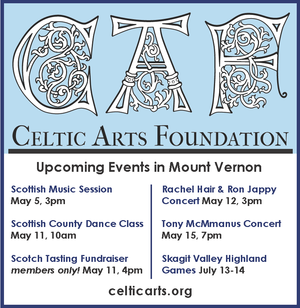Tuning in on Skagit Valley swans
January 9, 2019
The fall migration has brought swans, trumpeter and tundra, to grace our skies and landscape in the Skagit Valley. As their breeding grounds freeze over in Alaska, the swans follow traditional migration routes returning to Skagit County’s abundant farm fields and wetlands.
The Skagit Valley hosts the largest concentration of trumpeter swans in North America each winter, an awesome sight to behold. Yet these elegant birds were close to extinction in the 1960s.
Of the nearly 12,000 swans wintering in the valley, 90 percent are trumpeters with 10 percent tundra. They often occur together on the wintering grounds, sharing the same habitats and have similar conservation needs and concerns.
While the numbers of swans wintering in Washington has continued to rise over the years, their future is far from secure. Agriculture is vital to support the valley’s abundant waterfowl population of swans, ducks and snow geese. Swans depend on dairy farm corn and pasture grass, potatoes and winter wheat. Waterfowl friendly crops are on the decline due to conversion to crops such as berries and nursery trees. The loss of this acreage is becoming an issue as more snow geese arrive annually, competing for food resources with swans and ducks.
While out birding, you may see power lines with “flappers” hanging from them that move in the wind or glow in the dark. These are avian diverters put up by Puget Sound Energy to help swans see the lines and avoid collisions. They reduce power line collisions substantially.
An ongoing issue for swans is lead poisoning from lead shot ingestion. It continues to be a problem even though lead shot has been banned for hunting since 1989. Clay target shooting onto farm fields and wetlands puts all waterfowl, especially swans, at risk of lead poisoning.
The Northwest Swan Conservation Association is dedicated to native swan conservation in Washington. We are accomplishing our mission through education, outreach and on the ground conservation efforts by actively working with public agencies, volunteers and organizations.
We are committed to have trumpeter and tundra swans in our lives and the Washington ecosystem. If you would like to help conserve swans, please join us.
For more information or a Swan ID pamphlet: http://www.nwswans.org or [email protected].
Visit our booth at the La Conner Birding Showcase, Jan. 26 in Maple Hall.
Martha Jordan started Northwest Swan Conservation Association in 2015 after a lifetime of working on swan conservation. She is its executive director.










Reader Comments(0)